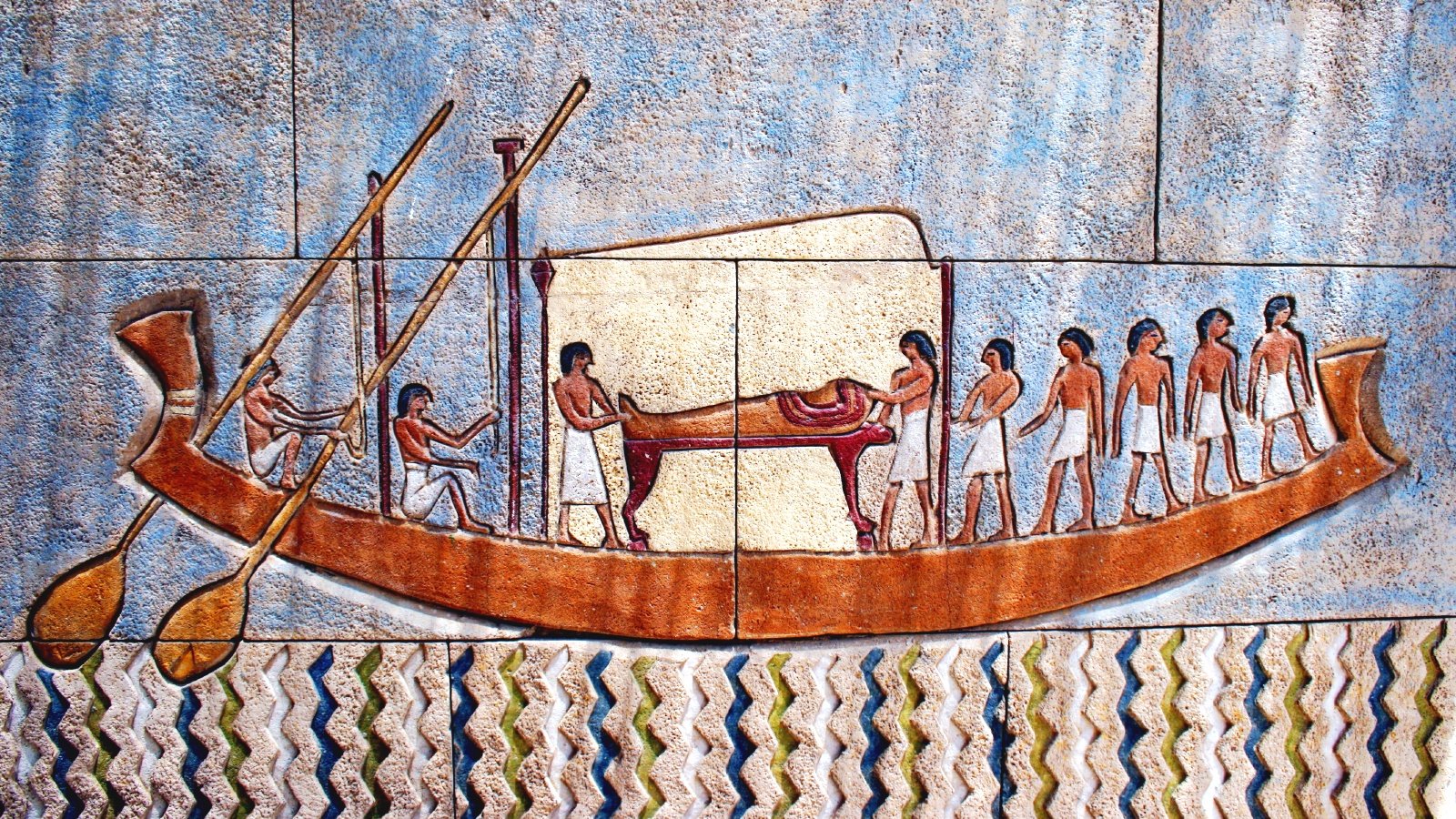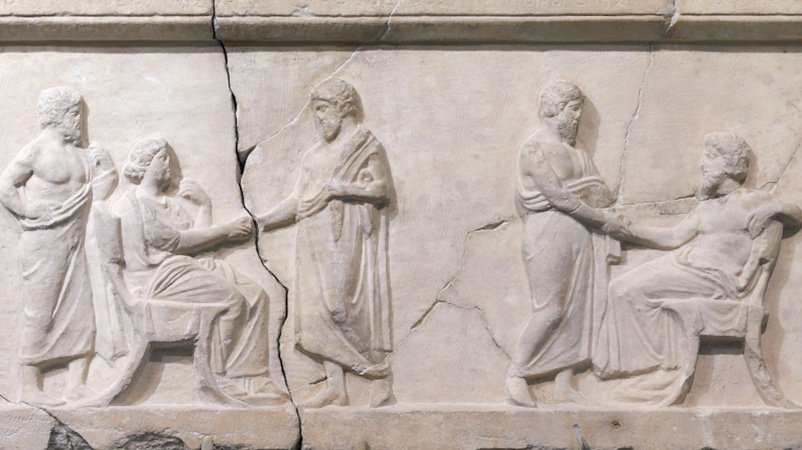
Let’s face it, ancient history isn’t the easiest subject to get middle and high school students excited about.
It can be difficult to come up with engaging lessons when you start a subject off by essentially discussing the beginning of time. And, I mean, I personally do not know many teachers that love to teach it. When you ask a history teacher what their favorite subject is to teach, you usually don’t hear a resounding “ancient history!” Bless its heart.
Even though it comes with its fair share of difficulties, that’s one of the reasons I actually love to teach it. It’s a fun challenge to come up with ways to make the subject more engaging and enhance retention in my students.
Since I have been teaching the subject, I luckily have had access to Active Classroom. The program has introduced me to most of my favorite activities and strategies for teaching ancient history, but you can use these strategies without having the program. They are that flexible!
Click here to sign up for a free trial of Active Classroom.

1. Gallery Walk
This activity is a great way for students to interact with the material and get up out of their seats and moving! What I like to do is post pictures around the room that correlate with the civilization or empire I am discussing and match the learning target for the day.
Underneath these pictures are quick summaries of what the students are looking at and questions that help students dig deeper into the time period. The key to these questions is that the first one or two can be comprehension questions to make sure students understand what they are looking at, and then the questions become deeper, asking students to show greater depth of knowledge. Students can also analyze the picture by answering questions that allow them to make inferences, contextualize, and interpret its meaning.
To conduct the activity, the students are divided into groups and travel around the room to spend a predetermined amount of time at each photo. Once each group has visited each photo, we come back together as a class to debrief the activity. I’m amazed at the conversations I hear my students have as they examine the pictures. Not only are they learning more about the topic we’re studying, they are also developing valuable analysis skills.

2. Simulation: Farming vs. Hunting/Gathering
Simulations are another great way to get students excited and interested in a subject. They are a way for students to experience a problem, issue, or concept in history, and, subsequently, be able to explain it. One of my favorite simulations that I do each year demonstrates the differences in hunting and gathering versus farming; it also highlights the need for farming and how it supported ancient civilizations. Full disclosure: this activity is a World History Activator lesson from Active Classroom, and it is easier to implement using the pre-made activity; however, it is possible to create a similar one on your own.
Here’s how it works:
1. Find a reading on farming versus hunting or gathering. You can use your textbook or an article. For the sake of this explanation, let’s say that you use a section from the class textbook.
2. Create 20 questions that can be answered from the text, then split the question into fourths. The first three contain part of the question while the fourth lists the page number where the answer can be found. Place the four parts on separate cards. Label each card as A, B, C, or D, plus a correlating question number. Part A would be the first part of the question, part B would be the second, part C would be the third, and part D would be the page number. You will have 80 cards in all. Below is an example:
1AWhat tools |
1Bdid hunters |
1Cand gatherers use? |
1DPage 20 |
2AWhat food |
2Bdid hunters |
2Cand gatherers collect? |
2DPage 21 |
3. Place the 80 cards around the room.
4. Divide students into groups (“tribes”). Explain that they will be “hunting” the clues around the room.
5. Give each student a recording sheet to help them “gather” the clues. After they collect five clues, they need to return to their group and place their clues in the correct order on a separate sheet of paper. Next, they will need to find the answer to the question and write it down. Once they have a complete question and its answer, they will have a full “unit of food” to feed one person in their group. The goal is to get enough units to feed their entire group, plus a surplus, in the allotted time.
6. While the students are gathering clues, discreetly pick a group to be the “farming” group. Do not announce this to the rest of the class. This group will get the completed questions and will just have to find the answers. They will still need a few members of the groups to “gather” to look like they are still hunting and gathering. This group will be able to get a greater “food” surplus.
7. Give the students around 20 minutes to gather clues. However, cut it short if you see that some of the tribes are getting a surplus. You do not want the hunting and gathering tribes to create surpluses. Once you call time, record how many units of food each tribe created. The class will see that one group (the farming group) has a greater surplus of food than all of the rest of the groups.
8. Ask the other groups why they did not create a surplus like the farming group did. Explain that the farmers were able to feed themselves for longer because of the surplus that farming creates. Ask the other groups to defend their lack of surpluses. This should lead to a discussion on how the farming group did not have to travel and had everything they needed at their desks to create the surplus. This can lead to a discussion on the advantages of farming. The students really see how the agricultural revolution made it possible for civilizations to grow.
I love performing this activity because the students really get to experience the concept of how farming has an advantage over hunting and gathering.

3. Decision-Making Activities
I had to throw in this last activity because I always see how much the students learn every time I do one of these activities. All of these particular activities I do are from Active Classroom, but you can also create your own decision-making activities.
Decision-making activities present students with a problem experienced by people in history with various solutions from which to choose. Students read over the problem and decide which solution would be best. These activities are great for introducing a concept or time period. After students make their decisions, then you can reveal how the problem was actually handled and the effects of that solution. Through these activities, students learn more than historical concepts—they are also learning how to make effective decisions. My students love participating in these activities, and I can see afterwards how they retain the information and improve their decision-making skills.
These are just a few of the activities I use, but I’m always looking for more ways to engage my students, so if you have any activities or strategies you would like to share, please comment! Also please comment if you would like more information about any of these activities.
Try ancient history activities and more in Active Classroom for free with a 30-day trial!
Jessica Hayes has been teaching for five years. She completed a bachelors’ degree in Social Science Education at Auburn University in 2009, and a master’s degree in English Education from Jacksonville State University in 2014. Recently, she has received her Instructional Leadership certificate. In her work as a certified trainer for Active Classroom, she builds curriculum maps and trains educators on using the program. In her spare time, she loves reading and learning new technology/productivity skills.
